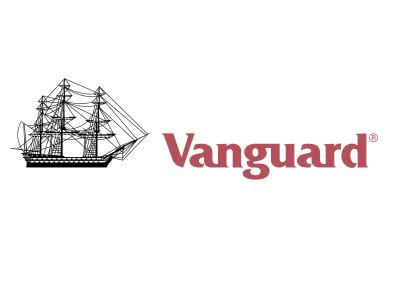Vanguard is a pioneer of index investing
This ETF provides broad exposure to a mix of global bonds
The ETF’s low charges should help it track the Bloomberg Global Aggregate Index (Hedged GBP)
How it fits in a portfolio
An ETF is a basket of investments that often includes shares or bonds. They tend to track the performance of an index such as the Bloomberg Global Aggregate Index and trade on stock exchanges, like shares. This means their price fluctuates throughout the day.
The Vanguard Global Aggregate Bond ETF provides exposure to a range of fixed income investments. Its benchmark, the Bloomberg Global Aggregate Index (Hedged GBP), includes investment-grade bonds with maturities greater than one year and is made up of a mixture of global government, corporate and securitised bonds.
An ETF is one of the simplest ways to invest and can be a low-cost way to add exposure to global bonds to an investment portfolio. ETFs that track global bonds could help diversify a portfolio focused on other assets, such as shares.
Manager
Vanguard is a pioneer when it comes to passive investing, having created the first retail index fund over 45 years ago. It now runs some of the largest index funds in the world. Given its size, it has a big investment team with the expertise and resources to help its ETFs track indices and markets as closely as possible, while having scale to keep costs down.
Vanguard ETFs are run by a large, global team. They’re spread across three investment hubs around the world – the US, UK and Australia. This team-based approach means there’s no named manager on the ETF. As a collective team, Vanguard has run this ETF for over 4 years.
Vanguard also has a trading analytics team, which is responsible for ensuring the ETFs buy and sell investments efficiently and at a competitive cost. This involves analysing data from different brokers and banks. Lower costs should help the ETFs track their benchmarks as closely as possible.
Process
This ETF aims to track its benchmark, the Bloomberg Global Aggregate Index (Hedged GBP), which is made up of a mixture of around 30,000 global bonds. The ETF currently invests in just over a third of the number of constituents in its benchmark, which is known as partial replication. This helps to keep costs down as the fund doesn’t buy and sell every bond that is added to or removed from the index.
The ETF has a bias towards global government bonds, while the remainder is mostly invested in bonds issued by companies. Some of the ETF is also invested in mortgage-backed securities and securitised bonds. These are all investment grade bonds that are deemed to be more likely to pay off their debts than some higher-risk bonds, such as high yield bonds. It mainly invests in the US, which makes up 46% of the ETF, and the rest is invested in other countries around the world such as Japan, France and Germany. The ETF also invests in higher risk emerging markets in line with the benchmark.
While the team doesn’t invest in every bond within the benchmark, the ETF has tended to track its index closely as the team aims to replicate its broader characteristics. For example, they select bonds that together help the ETF to closely match the benchmark’s credit rating or yield to maturity. A bond’s credit rating is an assessment of the ability to pay back its debt, while the yield to maturity is the total expected return if the bond is held until it matures.
Vanguard’s global team provides 24-hour market access and consistent ETF and bond price monitoring. The team also has access to local bond traders and these relationships can help the team find bonds at attractive prices.
The team also uses currency hedging to convert overseas currency bonds back to sterling. The prices and income of global bonds can fluctuate alongside foreign currency movements, adding volatility for UK investors. By using hedging, investors could experience less extreme price movements over time, which helps smooth returns. This can be achieved by using derivatives which can add risk where used.
Vanguard is more conservative than some other passive fixed income providers. For example, they don’t lend the investments within this ETF to other providers in return for a fee, known as securities lending.
As this ETF is listed offshore investors are not usually entitled to compensation from the UK Financial Services Compensation Scheme.
Culture
Vanguard is currently the second largest asset manager in the world and runs $8.6trn of assets globally as of March 2024. The group aims to put the client at the forefront of everything it does, which drives its focus on quality, low-cost index products.
Jack Bogle founded Vanguard in 1975 and it’s owned by investors. This allows Vanguard to redirect its profits back to investors in the form of lower fees, instead of paying dividends to external shareholders. Bogle believed in creating products that simply track the performance of a market rather than taking a shot at picking individual stocks which may beat them.
The team running this ETF works closely with other fixed income research and risk departments across the business. They have daily and weekly meetings to discuss ongoing strategy which could add good support and challenge on how to run the ETF effectively.
ESG Integration
Vanguard is predominantly a passive fund house. While it has offered exclusions-based passive funds for many years, it has lagged peers in offering passive funds that explicitly integrate ESG criteria by tracking indices that tilt towards companies with positive ESG characteristics, and away from those that don’t.
Vanguard’s Investment Stewardship team carries out most of the firm’s voting and engagement activity. Their stewardship activity is grounded in the firm’s four principles of good governance: board composition and effectiveness, oversight of strategy and risk, executive compensation and shareholder rights. The Stewardship team produces frequent insights on their engagement activity at both a corporate and governmental level.
Vanguard courted controversy in 2022 when it left the Net Zero Asset Managers’ Initiative, a group of asset managers that have committed to achieving net zero carbon emissions by 2050. It claimed its decision would improve clarity for investors and allow it to speak independently. We view this as a disappointing backward step, but we’re encouraged that the company will continue to engage with companies on climate-related issues.
The Vanguard Global Aggregate Bond ETF tracks an index that does not specifically integrate ESG considerations into its process. The ETF can therefore invest in bonds issued by companies in any sector.
Cost
The ETF currently has an ongoing annual fund charge of 0.10%. The annual charge to hold ETFs in the HL ISA or SIPP is 0.45% (capped at £45 p.a. in the ISA and £200 in the SIPP). There are no charges from HL to hold ETFs within the HL Fund and Share Account or HL Junior ISA. Ensuring an index fund has a low charge is an important part of tracking the underlying index closely.
As ETFs trade like shares, both a buy and sell instruction will be subject to the HL share dealing charges within any Hargreaves Lansdown account.
Performance
The ETF has done a good job of tracking the Bloomberg Global Aggregate Index (Hedged GBP) since it launched in 2019. As expected from an ETF, it’s fallen behind the benchmark over the long term because of the costs involved. However, the tools used by the managers have helped to keep performance as close to the index as possible.
Bond markets have performed well since the ETF was launched up until 2022. Bonds have faced many headwinds since, such as high inflation and big increases in interest rates, both of which make the future value and income paid by bonds less attractive. These headwinds have negatively impacted performance.
However, over the last 12 months, inflation has fallen more than expected and interest rates have reached what are widely considered to be peak levels. Bond markets have been volatile over the year but the rally at the end of 2023 boosted returns and saved the market from another year of losses. This rally was led by the expectation that interest rate cuts are on the horizon. Over the last year to the end of February, the ETF returned 4.38%*.
Bond yields move in the opposite direction to prices. After reaching high levels over the course of the year, that haven’t been seen for over a decade, yields fell sharply when bond markets rallied at the end of 2023. The yield for the Vanguard Global Aggregate Bond ETF was 2.53% as of the end of February. Yields aren’t guaranteed and shouldn’t be considered a reliable indicator of future income.
Given Vanguard’s size, experience and expertise, we expect the ETF to continue to track the benchmark well in the future, though there are no guarantees. As the currency of overseas bonds is hedged back to sterling, we expect the ETF’s performance to be less volatile over time compared to an equivalent unhedged ETF.
A glance at the five-year performance table below shows that the ETF has seen both positive and negative returns. This reflects the performance of the underlying benchmark, which it follows closely. Remember, past performance isn’t a guide to future returns.
Annual percentage growth
Feb 19 – Feb 20 | Feb 20 – Feb 21 | Feb 21 – Feb 22 | Feb 22 – Feb 23 | Feb 23 – Feb 24 | |
|---|---|---|---|---|---|
Vanguard Global Aggregate Bond ETF | N/A%** | 0.10% | -3.01% | -10.71% | 4.38% |
**Data not available between 28 February 2019 to 29 February 2020 due to when the ETF was launched.


